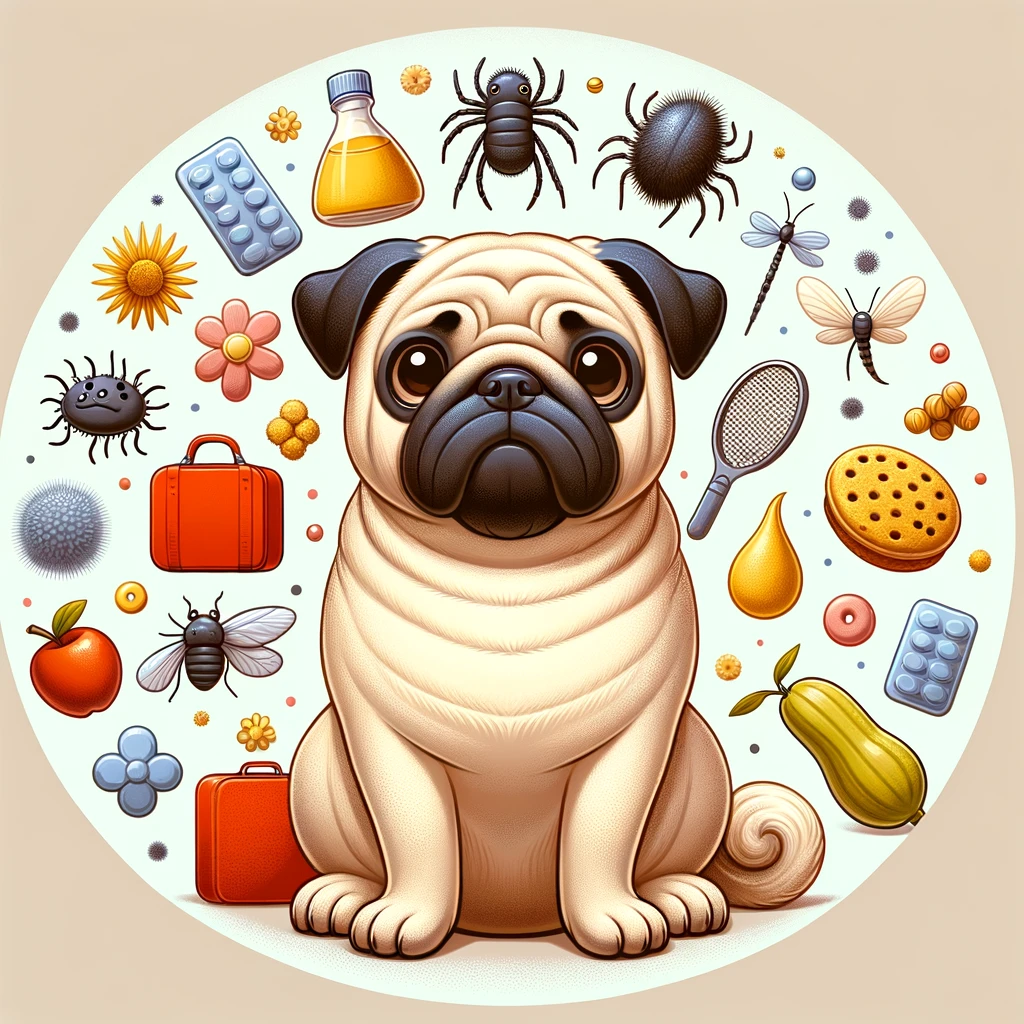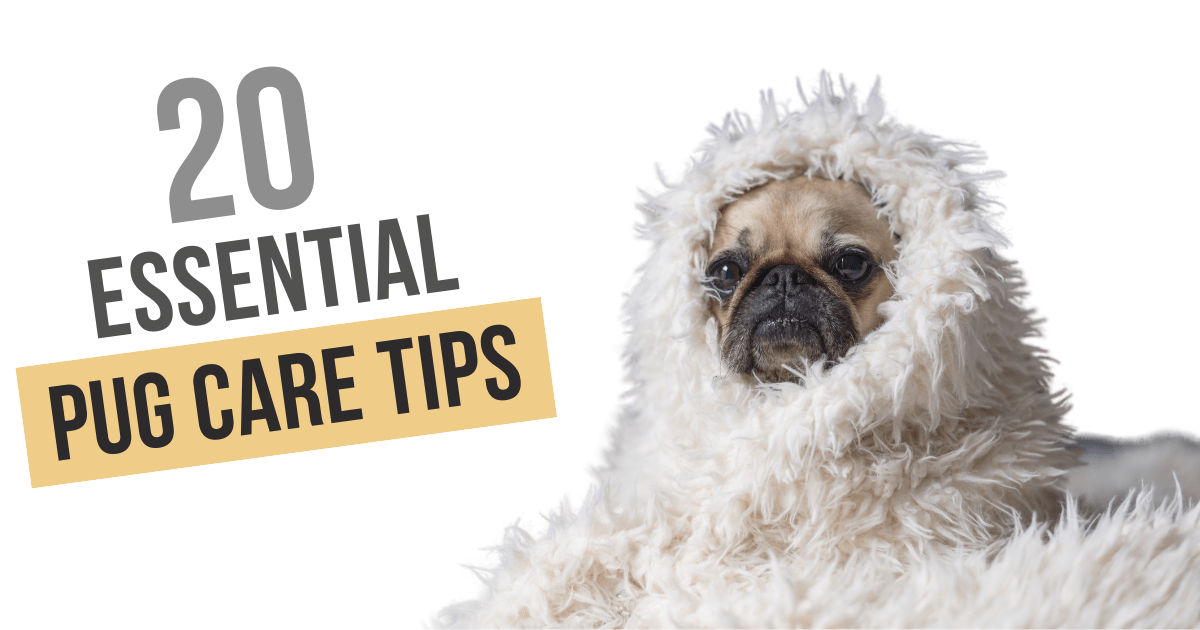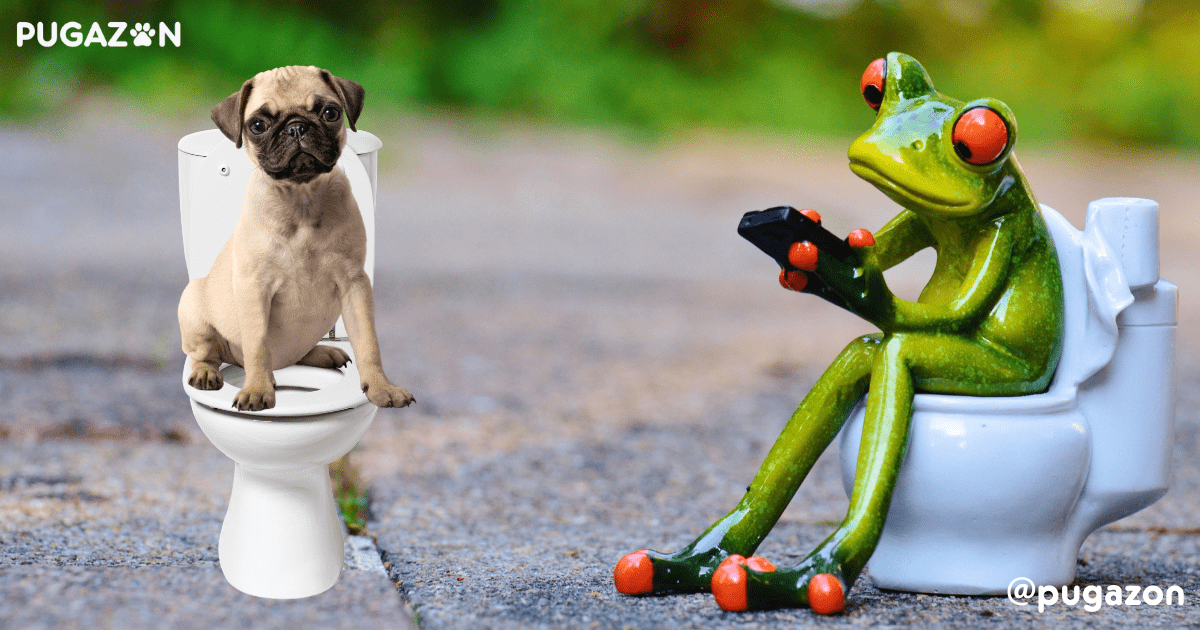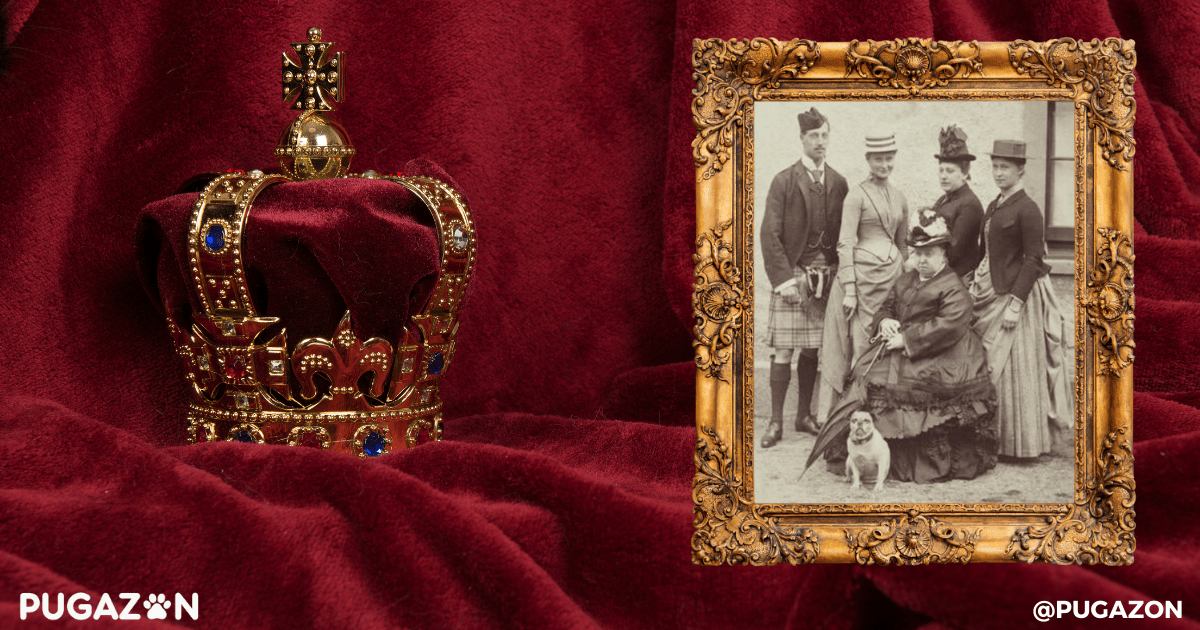- Signs of Allergy Symptoms in Pugs
- Types of Pug Allergies: Food, Skin, and Environmental
- How to Diagnose and Pinpoint Allergies in Pugs
- Best Treatments and Long-Term Management for Pug Allergies
- Natural and Home Remedies for Pug Allergies
- Preventing Allergies in Pugs
- Common Mistakes in Managing Pug Allergies
- Diet and Pug Allergies: How Food Affects Allergies
- Long-Term Allergy Management for Pugs
- Common Mistakes in Treating Pug Allergies
- FAQs About Pug Allergies
- What are the most common allergies in pugs?
- How do I know if my pug has a food allergy?
- Can pugs develop allergies later in life?
- How do I treat my pug’s allergies at home?
- What’s the best way to prevent seasonal allergies in pugs?
- Can I give my pug antihistamines for allergies?
- What foods should I avoid if my pug has food allergies?
- How do I prevent flea allergies in my pug?
- Can my pug outgrow their allergies?
- When should I take my pug to the vet for allergy symptoms?
Pugs, with their adorable wrinkled faces and charming personalities, are unfortunately highly susceptible to allergies. Due to their brachycephalic (flat-faced) structure and unique skin folds, they are more prone to both respiratory and skin allergies compared to other breeds. As a pug owner, it’s essential to be aware of the different types of allergies that may affect your pug, ranging from food and environmental triggers to seasonal allergens.
Allergies in pugs can manifest in several ways, including itchy skin, respiratory difficulties, and digestive issues. These symptoms may not always be immediately recognized as allergies, which is why understanding the potential triggers is vital for your pug’s health and comfort.
Pug allergies are often tied to their environment, diet, or even specific seasons. For instance, pollen in the spring can cause flare-ups in some pugs, while others may react negatively to certain ingredients in their food. Some pugs are even allergic to flea saliva, which leads to intense itching and skin irritation. Understanding the root causes of these allergic reactions is the first step in providing relief for your furry companion.
In this comprehensive guide, we’ll explore the various types of pug allergies, the common symptoms, and the best ways to diagnose and manage these allergies, ensuring your pug stays healthy and comfortable.
Key Points:
- Pugs are particularly prone to allergies due to their anatomy and skin folds.
- Common allergens include food, environmental factors, and seasonal triggers.
- Recognizing the signs early can help prevent long-term discomfort.
Signs of Allergy Symptoms in Pugs
Recognizing the signs of allergies in your pug is crucial for managing their condition. Because pugs have such distinct physical features—like flat faces and skin folds—their allergy symptoms can vary widely. They may experience skin-related symptoms, respiratory issues, or even gastrointestinal problems.
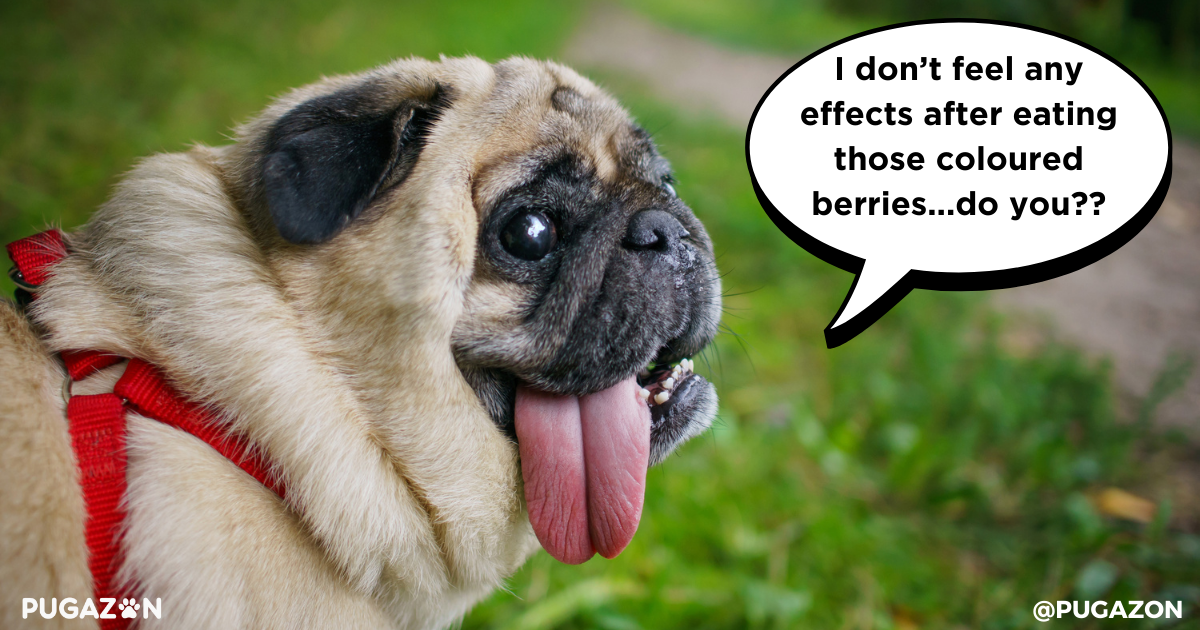
Skin Irritations
One of the most visible symptoms of allergies in pugs is skin irritation. Your pug may exhibit excessive itching, particularly around their paws, ears, or face. Skin fold areas are especially vulnerable, as moisture and dirt can easily accumulate, leading to irritation or infection. Common signs of skin-related allergies include:
- Redness or inflammation around the skin folds or paws
- Excessive licking of paws or scratching of ears
- Bald patches or hair loss due to scratching
- Hot spots or lesions that develop as a result of constant irritation
Example: If your pug is constantly licking their paws or rubbing their face on furniture, it may be an indication of an underlying allergy.
Gastrointestinal Issues
Food allergies in pugs often manifest as gastrointestinal problems. If your pug is allergic to a specific ingredient in their food, they may experience symptoms like vomiting, diarrhea, or bloating after meals. Other signs of food-related allergies include poor coat quality and recurring ear infections.
Respiratory Symptoms
Due to their flat faces, pugs are already prone to breathing issues, and allergies can exacerbate these problems. Symptoms such as sneezing, coughing, wheezing, or difficulty breathing may indicate that your pug is reacting to airborne allergens like pollen or dust. If these symptoms worsen during specific times of the year, seasonal allergies might be the culprit.
Behavioral Changes
When your pug is suffering from allergies, they may also exhibit changes in behavior. A typically playful pug might become irritable, restless, or lethargic. This discomfort can make them less interested in activities they usually enjoy, like playing or going for walks.
Key Points:
- Common symptoms include skin irritation, digestive issues, and respiratory problems.
- Behavioral changes, such as restlessness or irritability, can also indicate an allergic reaction.
- Identifying these symptoms early can help prevent more severe allergic reactions.
Types of Pug Allergies: Food, Skin, and Environmental
Pugs can experience a variety of allergies, and each type requires different approaches for diagnosis and treatment. Let’s take a deep dive into the most common types of allergies in pugs: food allergies, skin allergies, and environmental allergies.
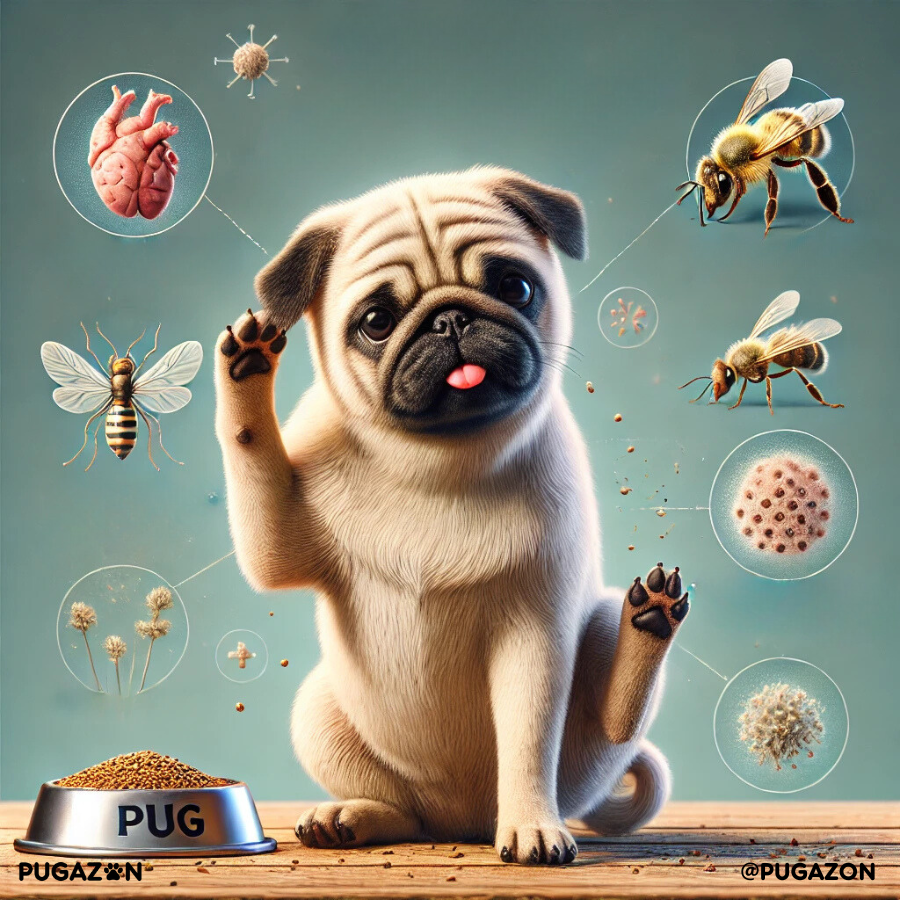
Food Allergies
Food allergies are quite common in pugs and are typically triggered by specific proteins found in dog food. Some of the most common allergens include:
- Chicken
- Beef
- Dairy products
- Grains such as wheat and corn
Symptoms: Pugs with food allergies may experience chronic itching, especially around the paws and ears, as well as digestive issues such as vomiting and diarrhea. Recurrent ear infections and poor coat quality are also common signs of food allergies.
Solution: If you suspect your pug has a food allergy, an elimination diet can help determine the cause. This involves feeding your pug a limited ingredient diet, usually consisting of novel proteins like lamb or duck, and then slowly reintroducing potential allergens one at a time.
Environmental Allergies
Environmental allergens can include anything from pollen to household chemicals. Pugs can develop sensitivities to these allergens over time, especially during certain seasons or after prolonged exposure.
Common Environmental Allergens:
- Pollen (especially in the spring)
- Dust mites
- Mold spores
- Chemicals in cleaning products or laundry detergents
Symptoms: Pugs with environmental allergies often exhibit sneezing, watery eyes, coughing, or itchy skin. These symptoms tend to flare up during specific seasons, particularly spring and fall when pollen levels are high.
Solution: To manage environmental allergies, reduce your pug’s exposure to the offending allergens. Use air purifiers to clean indoor air, regularly vacuum your home, and wipe down your pug’s paws after walks to remove any pollen or dust.
Skin Allergies
Pugs are particularly prone to skin allergies due to their wrinkly, folded skin, which can trap allergens, moisture, and bacteria. Skin allergies are usually triggered by flea bites, environmental factors, or food sensitivities.
Symptoms: Itchy skin, redness, and hot spots are the most common symptoms of skin allergies. In some cases, your pug may develop secondary infections if they scratch excessively, damaging the skin.
Solution: Treating skin allergies involves a combination of addressing the root cause (e.g., fleas or environmental factors) and managing symptoms through medicated shampoos, antihistamines, or topical treatments.
How to Diagnose and Pinpoint Allergies in Pugs
Diagnosing allergies in pugs can be a challenging process due to the variety of symptoms and potential triggers. Understanding the specific cause of your pug’s discomfort requires patience, thorough observation, and often veterinary intervention. However, identifying the underlying allergens is essential for effective treatment.
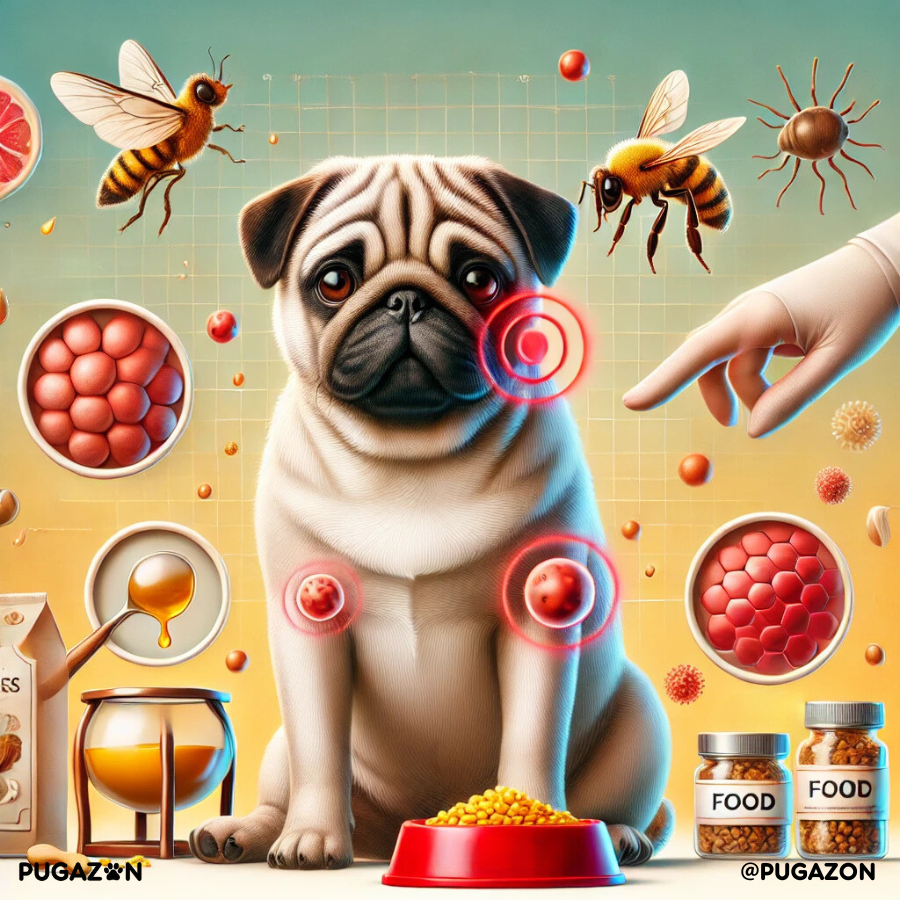
Veterinary Allergy Testing
One of the most reliable ways to pinpoint allergies in pugs is through veterinary testing. There are two common types of allergy tests:
- Blood Tests: Blood tests analyze your pug’s immune response to various allergens, including food, pollen, and mold. This test is relatively easy to perform and provides insights into environmental and food-related triggers.
- Intradermal Skin Testing: This is one of the most accurate methods for identifying environmental allergies. It involves injecting small amounts of suspected allergens just beneath the skin and observing reactions. However, this method is primarily used for environmental triggers like pollen, dust mites, or mold.
Both methods offer insights into what is causing your pug’s allergic reactions and guide you toward targeted treatments. Keep in mind that no allergy test is 100% accurate, so working with your vet and combining testing with at-home observations will provide the best results.
Last update on 2025-02-11 / * Affiliate links / Image source: Amazon Product Advertising API
Home Observations and Symptom Tracking
Before resorting to formal tests, many pug owners can gather useful information by observing their pug’s behavior and keeping a detailed allergy journal. Here’s how to start:
- Record Symptoms: Keep track of when your pug’s symptoms appear and what potential allergens may be present. Note when sneezing, scratching, or digestive issues occur and if they worsen after specific meals or in particular environments.
- Monitor Seasonal Patterns: Allergies like pollen-related reactions may occur seasonally. If your pug seems to exhibit symptoms only during spring or fall, it could indicate seasonal allergies.
- Observe After Walks or Outdoor Time: If your pug shows signs of irritation, such as licking their paws or sneezing after being outdoors, it may suggest environmental allergies to pollen or grass.
Elimination Diets for Food Allergies
If your vet suspects a food allergy, they may recommend an elimination diet. This involves feeding your pug a limited-ingredient or hypoallergenic diet for several weeks and then gradually reintroducing potential allergens one at a time to identify the culprit.
- Step 1: Start with a limited-ingredient diet that features a novel protein and carbohydrate your pug hasn’t eaten before (e.g., venison and sweet potatoes).
- Step 2: Feed this diet exclusively for 8–12 weeks. During this time, monitor your pug’s symptoms. If their allergy symptoms improve, it suggests that one or more previous foods were causing the reaction.
- Step 3: Reintroduce foods one by one. After a period of stability, introduce one new food ingredient every few weeks and monitor for signs of an allergic reaction. This method will help you pinpoint specific food allergens.
When to Consult a Specialist
In cases where allergies are severe or difficult to manage, you may need to consult a veterinary dermatologist. These specialists focus on diagnosing and treating skin and allergy issues in pets. They can perform more advanced tests, such as patch testing or recommending allergy shots (immunotherapy) for long-term management.
Key Points:
- Allergy testing, including blood tests and intradermal skin testing, helps identify allergens.
- Keeping an allergy journal to track symptoms and seasonal patterns is crucial.
- An elimination diet can help pinpoint food allergies by removing and gradually reintroducing ingredients.
Best Treatments and Long-Term Management for Pug Allergies
Managing pug allergies requires a long-term commitment to both medical treatments and lifestyle adjustments. Once your vet has identified the specific allergens affecting your pug, the goal is to reduce exposure, alleviate symptoms, and prevent future flare-ups.
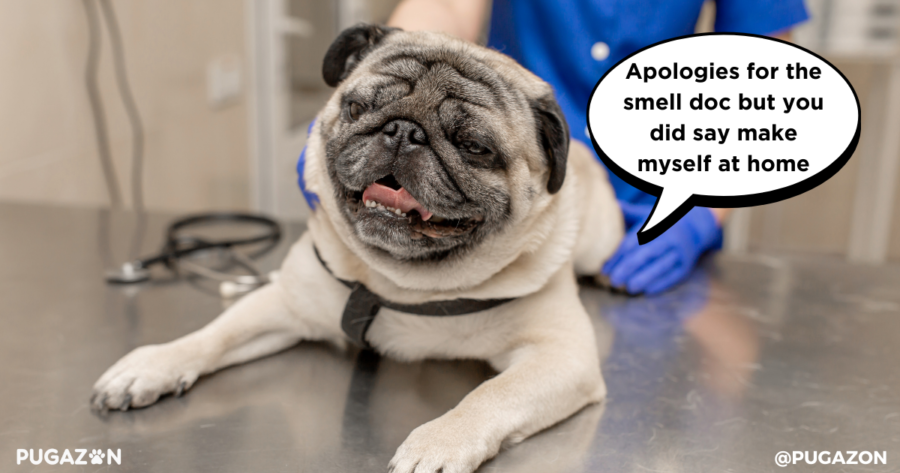
Medical Treatments for Pug Allergies
Depending on the severity of your pug’s allergies, your vet may recommend several different types of treatments:
- Antihistamines: Over-the-counter antihistamines like Benadryl or Zyrtec are often used to manage mild allergy symptoms in pugs. They help reduce itching, sneezing, and watery eyes caused by environmental allergies.
- Dosage: Always consult your vet before giving your pug human antihistamines to ensure proper dosage and safety.
- Corticosteroids: For more severe allergic reactions, corticosteroids may be prescribed. These anti-inflammatory medications help control intense itching and swelling. However, they are typically used for short periods due to potential side effects with long-term use.
- Allergy Shots (Immunotherapy): For chronic and persistent allergies, your vet might recommend immunotherapy. This involves injecting small amounts of the allergen into your pug over time, gradually desensitizing their immune system. This treatment is particularly useful for environmental allergies and can reduce the frequency and severity of flare-ups.
- Topical Treatments: For pugs with skin allergies, medicated shampoos, creams, and sprays can help soothe irritated skin. Your vet may recommend using shampoos with ingredients like aloe vera, oatmeal, or hydrocortisone to reduce inflammation and provide relief.
- Dietary Supplements:
- Omega-3 Fatty Acids: Omega-3 supplements, commonly found in fish oil, help reduce inflammation and promote healthy skin. They are especially beneficial for pugs with skin allergies.
- Probiotics: Adding probiotics to your pug’s diet can improve gut health, which may help reduce food allergies or digestive-related symptoms.
Long-Term Lifestyle Adjustments
While medications can help control allergic reactions, making lifestyle changes to reduce your pug’s exposure to allergens is key to managing allergies in the long run.
- Clean Your Home Regularly: Dust mites and pollen are common environmental allergens. Regularly vacuum your carpets, furniture, and floors, and wash your pug’s bedding weekly to remove these allergens. Using air purifiers with HEPA filters can also reduce airborne allergens inside the house.
- Control Fleas: Pugs with flea allergies require strict flea control measures. Talk to your vet about effective flea preventatives, and ensure your home and yard are treated for fleas regularly to prevent flare-ups.
- Bathing and Grooming: Regular baths with hypoallergenic shampoos can help remove allergens from your pug’s skin and coat. Be sure to wipe down their paws and belly after walks to avoid bringing outdoor allergens into the home.
- Dietary Adjustments: For pugs with food allergies, maintaining a limited-ingredient or hypoallergenic diet is essential. Avoid feeding your pug table scraps, which may contain ingredients that could trigger an allergic reaction.
- Monitor Seasonal Allergies: If your pug has seasonal allergies, limit outdoor exposure during peak allergy seasons, such as spring or fall. Wiping down your pug’s fur and paws after walks can help remove pollen and other allergens.
Prevention is Key
Preventing allergies in pugs is largely about reducing their exposure to known allergens. Whether your pug is sensitive to specific foods, environmental factors, or fleas, taking proactive measures can help manage their symptoms before they become a problem.
Regular Vet Checkups
Regular vet visits are crucial for managing allergies in pugs. Your vet will monitor your pug’s condition, adjust treatments as needed, and perform routine checks for signs of secondary infections or complications. Staying on top of your pug’s allergies helps prevent long-term health issues, such as chronic skin infections or respiratory problems.
Key Points:
- Managing allergies involves a combination of medications (antihistamines, corticosteroids, etc.) and lifestyle changes.
- Reducing exposure to allergens, maintaining a clean environment, and using dietary supplements help manage symptoms.
- Long-term allergy management is an ongoing process, requiring regular vet checkups and adjustments.
Natural and Home Remedies for Pug Allergies
For pugs with mild to moderate allergies, natural and home remedies can provide relief without the side effects often associated with medications. While these remedies aren’t a replacement for veterinary care, they can complement traditional treatments and help manage your pug’s allergies on a day-to-day basis.
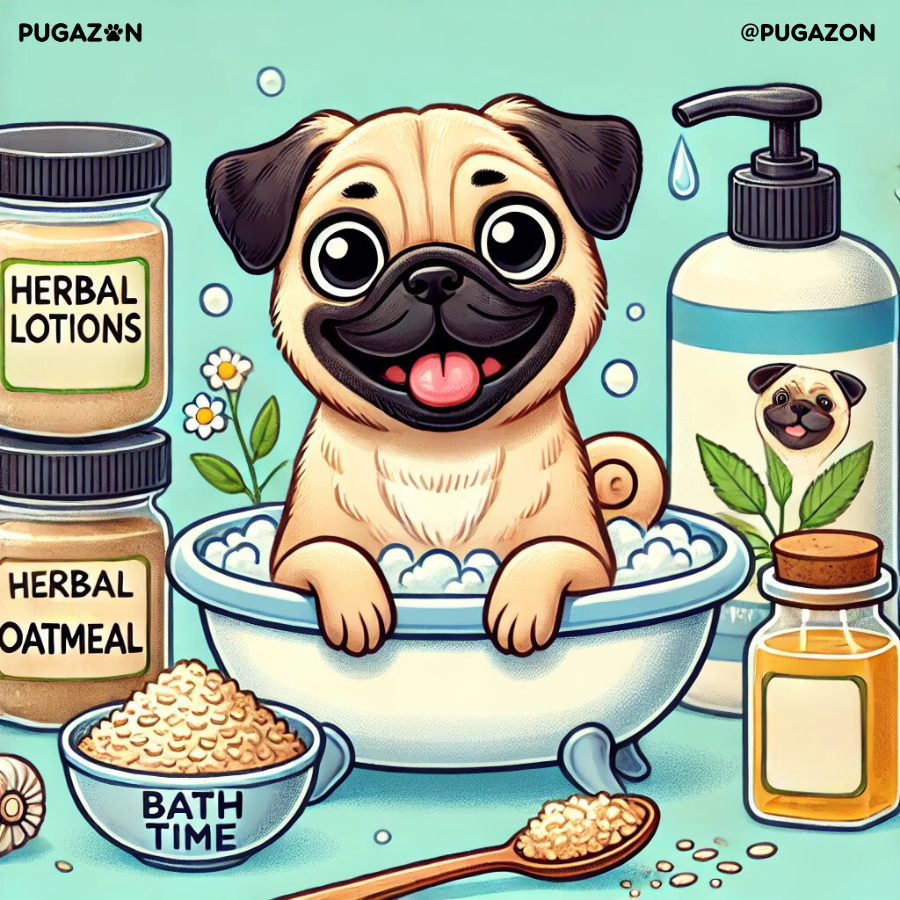
Always Stay Up to Date
Coconut Oil for Itchy Skin
Coconut oil is one of the most popular natural remedies for soothing irritated skin in dogs, including pugs. It has antibacterial, antifungal, and anti-inflammatory properties, making it perfect for treating skin infections and reducing itching caused by allergies. You can apply a small amount of virgin coconut oil directly to the affected areas or add a spoonful to your pug’s food to promote healthy skin and coat from the inside out.
- Application: Rub coconut oil gently onto your pug’s skin, especially in irritated areas like paws and skin folds.
- Benefits: Reduces inflammation, moisturizes dry skin, and helps fight bacterial and fungal infections.
Oatmeal Baths for Skin Allergies
Oatmeal is another natural remedy that can help soothe your pug’s irritated skin. An oatmeal bath provides relief from itching by calming inflamed skin and creating a protective barrier to lock in moisture. This is particularly useful for pugs with environmental or skin allergies.
- How to Make an Oatmeal Bath: Grind plain oatmeal into a fine powder and mix it into warm water. Let your pug soak in the bath for 10-15 minutes, then rinse thoroughly.
- Benefits: Oatmeal’s anti-inflammatory properties reduce itching and irritation, providing a soothing experience for your pug.
Apple Cider Vinegar Spray for Skin Irritations
Apple cider vinegar (ACV) is a natural antifungal and antibacterial solution that can help relieve itching caused by allergies. Dilute the ACV with water (one part vinegar to three parts water) and spray it onto your pug’s skin. Avoid using ACV on open wounds, as it may cause irritation.
- How to Use: Mix ACV with water in a spray bottle and apply it to itchy or irritated areas.
Benefits: The antimicrobial properties of ACV help prevent infections and soothe skin irritations.
DIY Allergy Relief Spray
For a quick and natural allergy relief solution, you can create a DIY spray using distilled water and a few drops of essential oils like lavender or chamomile, both known for their soothing properties. This homemade spray can help reduce itching and calm irritated skin.
- How to Make It: In a spray bottle, mix distilled water with 2-3 drops of lavender or chamomile essential oil. Shake well and spray onto your pug’s coat and skin.
- Benefits: Helps calm irritated skin and provides a natural, pleasant scent.
Dietary Supplements to Support Allergy Management
In addition to topical treatments, certain dietary supplements can help manage your pug’s allergies from the inside out. Omega-3 fatty acids, commonly found in fish oil, are known to reduce inflammation and improve skin health. Adding omega-3 supplements to your pug’s diet can help combat dry, itchy skin and reduce the severity of allergic reactions.
- Turmeric: Turmeric is a natural anti-inflammatory that can be added to your pug’s food to help reduce allergy-related inflammation. Always consult your vet before introducing new supplements.
- Probiotics: Probiotics improve gut health, which can positively impact your pug’s immune response to allergens. This is particularly useful for pugs with food sensitivities.
Lifestyle Adjustments to Reduce Allergens
Beyond natural remedies, making small lifestyle changes can help reduce your pug’s exposure to allergens and minimize allergic reactions.
- Keep Your Home Clean: Regularly vacuum and dust your home to remove environmental allergens like dust mites and pollen. Wash your pug’s bedding weekly and use an air purifier to improve indoor air quality.
- Wipe Down After Walks: After outdoor activities, wipe your pug’s paws and fur to remove allergens like pollen or grass.
- Hypoallergenic Diet: For pugs with food allergies, switching to a hypoallergenic diet can greatly reduce symptoms. Consult your vet for recommendations on limited-ingredient or grain-free foods.
Key Points:
- Natural remedies like coconut oil, oatmeal baths, and apple cider vinegar can soothe irritated skin and reduce inflammation.
- Dietary supplements, including omega-3 fatty acids and turmeric, help reduce allergy-related inflammation.
- Simple lifestyle adjustments, like keeping your home allergen-free, can reduce the frequency of allergic reactions.
Preventing Allergies in Pugs
While some allergies in pugs can’t be entirely eliminated, there are several ways to minimize your pug’s exposure to allergens and reduce the likelihood of flare-ups. Prevention is always better than cure, especially when it comes to managing your pug’s allergies over the long term.
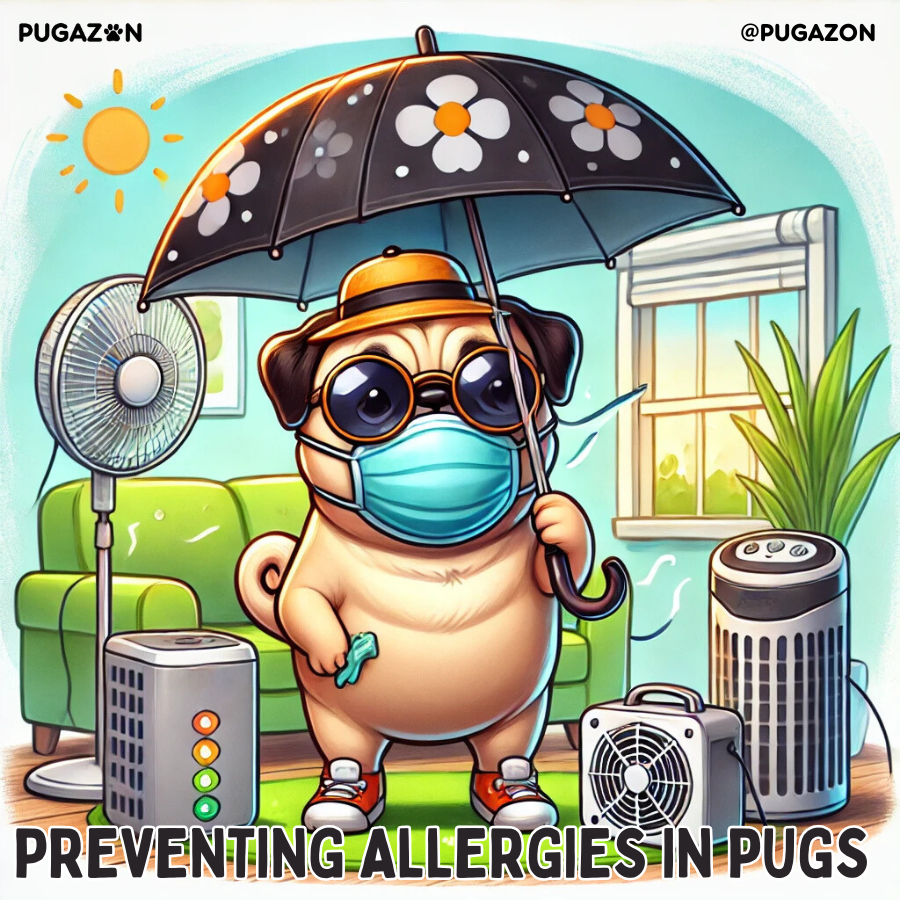
Environmental Allergies: Limiting Exposure to Triggers
Environmental allergies, such as reactions to pollen, dust mites, or mold, are some of the most common types of allergies in pugs. Preventing these allergies involves making adjustments in your home and routine to reduce your pug’s exposure to allergens.
- Clean Your Home Regularly: Vacuuming carpets and furniture, as well as dusting surfaces, can help remove dust mites and pollen from your home. Consider using a vacuum with a HEPA filter to trap allergens more effectively.
- Use Air Purifiers: Installing HEPA air purifiers in key areas of your home can help filter out airborne allergens, such as pollen, dust, and pet dander.
- Wipe Down After Outdoor Walks: After your pug returns from a walk, wipe down their paws and fur to remove any pollen or dust they may have picked up. This simple habit can help reduce the number of allergens brought into your home.
- Reduce Moisture: To prevent mold growth in your home, use a dehumidifier in areas prone to dampness, such as basements or bathrooms. Keeping your home dry and well-ventilated helps reduce mold spores.
Food Allergies: Diet Management
Preventing food allergies involves identifying and avoiding the specific ingredients that trigger your pug’s allergic reactions. Once you’ve worked with your vet to pinpoint the offending ingredients through an elimination diet, it’s important to avoid these foods entirely.
- Stick to a Consistent Diet: Feed your pug a high-quality, limited-ingredient diet that avoids common allergens like chicken, beef, and grains. Consistency in your pug’s diet can prevent flare-ups and promote better overall health.
- Avoid Table Scraps: Human food can contain allergens that are harmful to pugs, even in small amounts. Avoid giving your pug table scraps, especially if they have known food sensitivities.
Flea Prevention
Flea allergies are another common issue for pugs, and preventing flea infestations is key to avoiding allergic reactions. Flea saliva is a powerful allergen, and even a single flea bite can cause intense itching and discomfort.
- Flea Control Products: Use vet-recommended flea control products, such as flea collars, topical treatments, or oral medications, to keep fleas at bay.
- Regular Grooming: Regularly grooming your pug with a flea comb can help you catch any fleas early before they cause a full-blown infestation. Bathing your pug with flea-repellent shampoos can also help prevent flea-related allergies.
Maintain a Healthy Weight
Maintaining a healthy weight is important for pugs, especially since overweight pugs are more prone to developing allergies. Excess weight can weaken your pug’s immune system and exacerbate allergic reactions. Keeping your pug on a balanced diet with regular exercise helps maintain their overall health and resilience to allergies.
Key Points:
- Reducing exposure to environmental triggers like pollen and dust mites helps prevent allergic flare-ups.
- Maintaining a hypoallergenic diet and preventing fleas are key strategies in managing food and flea allergies.
- Keeping your pug’s environment clean and maintaining a healthy weight also contribute to long-term allergy prevention.
Common Mistakes in Managing Pug Allergies
When managing pug allergies, it’s easy to make mistakes that can inadvertently worsen your pug’s symptoms. Knowing these common pitfalls can help you avoid setbacks and keep your pug healthy and comfortable.

Not Consulting a Vet Early Enough
One of the most common mistakes pug owners make is delaying a visit to the vet when allergy symptoms first appear. Many owners try home remedies or over-the-counter treatments without understanding the underlying cause of their pug’s allergies. However, the longer an allergy goes untreated, the more likely it is to worsen and become chronic.
- Solution: Always consult your vet at the first sign of allergy symptoms. Early diagnosis leads to more effective treatment and quicker relief for your pug.
Overusing Human Medications
While antihistamines like Benadryl are commonly used to treat allergies in dogs, administering human medication without proper guidance can be dangerous. Incorrect dosages or inappropriate medication can lead to adverse reactions or mask the real cause of the allergy.
- Solution: Never give your pug human medications without consulting a vet. Always follow the prescribed dosage and only use medications recommended by your vet.
Inconsistent Allergy Management
Allergy management requires consistency. Skipping treatments, missing doses of medication, or not following through with dietary adjustments can make allergy symptoms worse. This is especially true for long-term conditions like food allergies or environmental sensitivities.
- Solution: Stick to a regular schedule for medications, treatments, and diet plans. Consistency is key to preventing flare-ups and ensuring long-term relief.
Ignoring Environmental Factors
Many owners focus solely on food when addressing their pug’s allergies, overlooking environmental triggers. Pugs are just as likely to react to pollen, dust mites, mold, or cleaning products as they are to certain foods.
Solution: Consider all possible allergens, not just food. Regular cleaning, air purification, and minimizing your pug’s exposure to outdoor allergens can significantly reduce symptoms.
Feeding "Safe" Treats Without Checking Ingredients
It’s easy to assume that treats labeled as “safe” or “natural” are okay for pugs with allergies. However, even these products can contain hidden allergens such as grains, artificial additives, or proteins that trigger reactions.
- Solution: Always read ingredient labels carefully, even on treats. Stick to hypoallergenic or limited-ingredient treats, especially if your pug has known food allergies.
Overfeeding During Treatment
Some owners mistakenly believe that giving their pug more food will “balance out” their allergic reaction, especially when they switch to a hypoallergenic diet. Overfeeding, however, can lead to weight gain, which exacerbates health issues like joint pain or respiratory problems in pugs.
- Solution: Stick to portion-controlled meals, even when switching to new diets. Consult your vet for the appropriate feeding amounts based on your pug’s weight and health condition.
Diet and Pug Allergies: How Food Affects Allergies
Diet plays a crucial role in managing allergies, particularly for pugs with food sensitivities. The type of food you feed your pug can either exacerbate or alleviate their allergy symptoms. Understanding the connection between diet and allergies can help you make better choices for your pug’s health.
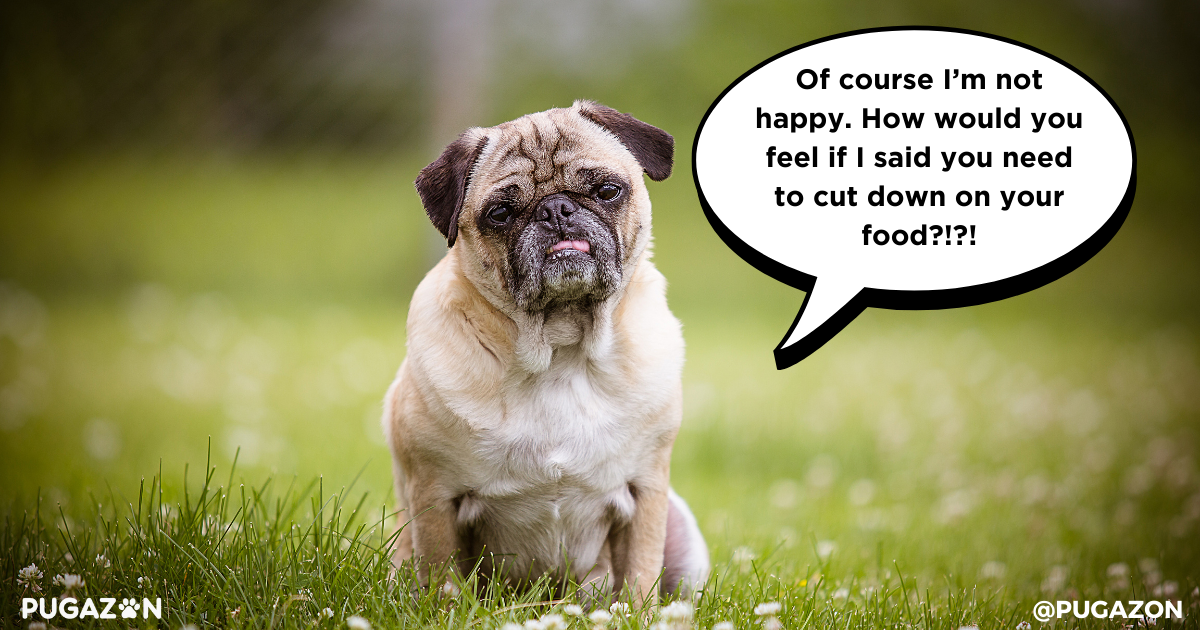
Identifying Food Allergens
Food allergies in pugs are typically triggered by specific proteins found in their diet, though grains and additives can also be culprits. The most common allergens include:
- Proteins: Chicken, beef, and dairy are common protein-based allergens. Pugs that are allergic to these proteins may develop skin irritation, digestive problems, or ear infections.
- Grains: Corn, wheat, and soy can trigger allergies in some pugs, leading to symptoms like itching, rashes, and gastrointestinal issues.
- Artificial Additives: Some pugs react to artificial preservatives, flavors, or colors found in commercial dog foods, leading to allergic reactions.
Elimination Diets
When it comes to food allergies, elimination diets are the gold standard for identifying triggers. An elimination diet involves feeding your pug a limited-ingredient food containing a novel protein (such as duck, venison, or lamb) and a single carbohydrate source. Over time, you reintroduce other ingredients one by one to identify which ones cause allergic reactions.
How It Works: The elimination diet process can take several weeks to complete, but it’s the most effective way to pinpoint food allergies in your pug. Consult your vet before starting an elimination diet to ensure it’s done safely.
Grain-Free vs. Hypoallergenic Diets
There’s a growing trend of grain-free diets for dogs, but grain-free doesn’t necessarily mean hypoallergenic. While some pugs are allergic to grains, others may have no issues with them. It’s important to differentiate between grain-free and hypoallergenic diets.
- Grain-Free Diets: These diets eliminate grains like wheat, corn, and soy. They can be beneficial for pugs with grain sensitivities but may still contain proteins that trigger allergies.
- Hypoallergenic Diets: These diets are specifically designed for dogs with food allergies. They often use novel proteins and limited ingredients to minimize the risk of allergic reactions.
The Importance of High-Quality Ingredients
Regardless of your pug’s specific allergies, feeding them high-quality, nutrient-rich food is essential. Low-quality foods often contain fillers, artificial ingredients, and allergens that can worsen allergy symptoms. Look for dog foods that list meat as the first ingredient and avoid those with unnamed meat byproducts.
Tip: If you suspect your pug has food allergies, choose a high-quality hypoallergenic dog food or consult your vet for specialized options.
Supplements for Allergy Relief
Certain dietary supplements can help alleviate allergy symptoms in pugs. Omega-3 fatty acids, for example, are known for their anti-inflammatory properties, which can soothe itchy skin and reduce inflammation. Probiotics can also support gut health, which may improve your pug’s immune response to allergens.
- Omega-3s: Found in fish oil, omega-3s can improve skin health and reduce inflammation in allergic pugs.
- Probiotics: These beneficial bacteria promote gut health and may reduce the severity of allergic reactions by improving the immune system.
Long-Term Allergy Management for Pugs
Managing allergies in pugs is not a one-time effort—it requires a consistent, long-term strategy to ensure your pug stays comfortable and healthy. By implementing preventive measures, working closely with your vet, and adjusting your pug’s environment, you can effectively reduce the impact of allergies over time.
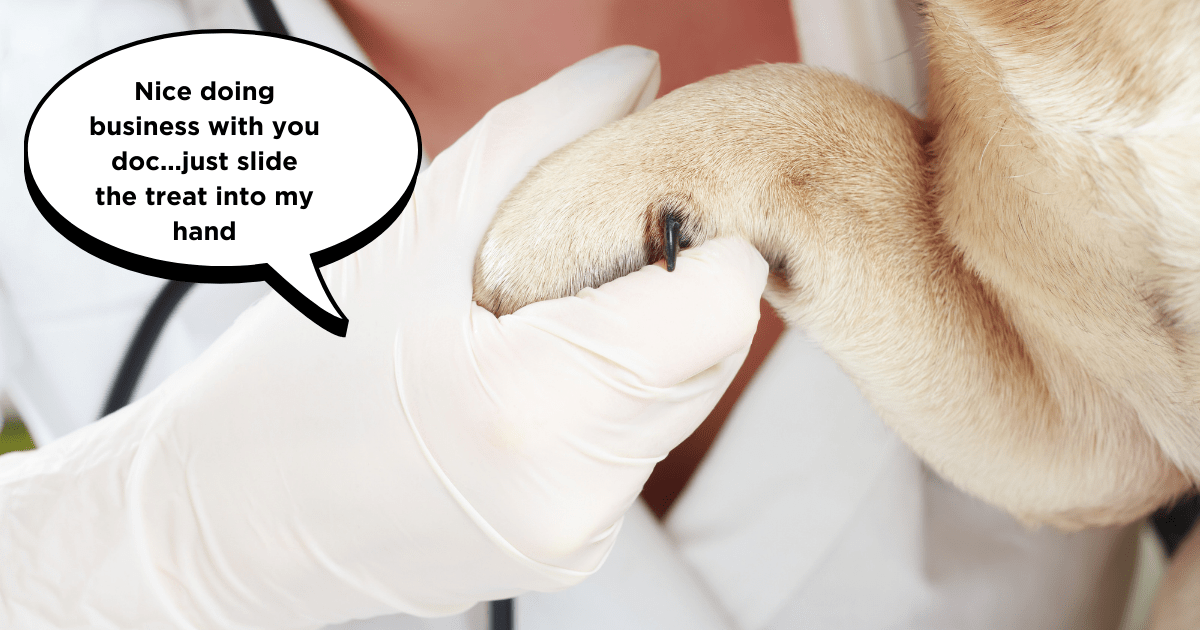
Regular Vet Checkups
Frequent vet visits are crucial for long-term allergy management. Your vet can monitor your pug’s condition, adjust treatments as needed, and catch any secondary issues (such as infections) early.
Tip: Schedule a checkup at least twice a year for pugs with known allergies. This will ensure that any flare-ups are treated promptly.
Consistent Use of Medication
If your vet has prescribed antihistamines, corticosteroids, or other allergy medications, consistency is key. Missing doses or stopping treatment prematurely can lead to worsening symptoms.
Tip: Set reminders to administer medication at the same time each day. Sticking to a routine helps prevent missed doses and keeps allergy symptoms under control.
Allergy Shots (Immunotherapy)
For pugs with chronic or severe allergies, immunotherapy (allergy shots) may be the best long-term solution. Immunotherapy involves exposing your pug to tiny amounts of the allergen over time, gradually desensitizing their immune system. This treatment can be highly effective, but it requires a long-term commitment.
Tip: Immunotherapy can take several months to show results, so patience is essential. Work closely with your vet to monitor your pug’s progress and adjust dosages if necessary.
Environmental Management
Maintaining a clean, allergen-free environment is crucial for managing allergies. Dust, pollen, mold, and other airborne allergens can accumulate in your home, causing flare-ups. Regular cleaning, air purifiers, and minimizing your pug’s exposure to allergens will reduce symptoms.
Tip: Vacuum frequently, wash your pug’s bedding in hot water weekly, and wipe your pug’s paws after outdoor walks to prevent allergens from entering your home.
Diet and Nutrition
For pugs with food allergies, managing their diet is a long-term strategy. Stick to hypoallergenic or limited-ingredient diets, and avoid feeding table scraps or treats that might contain allergens.
Tip: Consult with your vet to develop a long-term diet plan that ensures your pug gets the necessary nutrients without triggering allergic reactions. Monitor for any new food sensitivities as your pug ages.
Flea Prevention
Pugs with flea allergies require consistent flea prevention throughout their lives. Even a single flea bite can cause intense itching and discomfort for weeks.
Tip: Use vet-approved flea preventatives regularly and inspect your pug for signs of fleas, especially during the warmer months. Treat your home and yard as well to minimize flea exposure.
Managing Seasonal Allergies
Pugs with seasonal allergies may require heightened attention during certain times of the year. Pollen, grass, and other allergens peak during spring and fall, so it’s important to adjust your pug’s routine accordingly.
Tip: Limit outdoor time during high-pollen periods, and give your pug regular baths to wash off pollen. Consult your vet about increasing antihistamines or other medications during allergy seasons.
Common Mistakes in Treating Pug Allergies
Despite the best intentions, pug owners can make mistakes that hinder effective allergy management. Being aware of these pitfalls will help ensure your pug gets the proper care and relief they need.
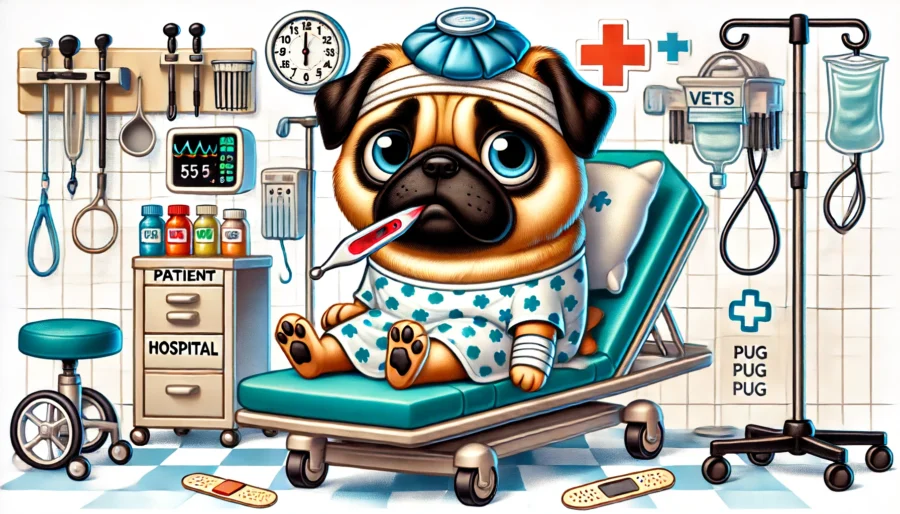
Ignoring Mild Symptoms
One of the biggest mistakes is ignoring early signs of allergies, like occasional scratching or sneezing. Many pug owners wait until symptoms become severe before taking action. By then, it may take longer to manage the condition.
Solution: Don’t wait! If you notice your pug showing mild symptoms of allergies, consult your vet. Early intervention can prevent long-term discomfort.
Inconsistent Use of Medications
Another common mistake is not following through with prescribed allergy treatments. Skipping doses or stopping medication when symptoms improve can lead to a relapse, as allergens may still be present in your pug’s environment.
Solution: Be consistent with treatments, even when your pug’s symptoms seem to improve. Complete the entire course of medication as directed by your vet.
Overlooking Environmental Factors
Many pug owners focus solely on food allergies without considering environmental triggers like pollen, dust mites, or mold. This can lead to incomplete allergy management.
Solution: Conduct a thorough assessment of your pug’s environment. Make sure to reduce airborne allergens through regular cleaning, air filtration, and outdoor precautions like wiping paws and bathing after walks.
Switching Diets Too Quickly
Switching your pug’s food too quickly can make it difficult to identify which ingredients are causing an allergic reaction. This often results in a trial-and-error process that causes unnecessary discomfort for your pug.
Solution: Use an elimination diet approach when dealing with food allergies. Introduce new foods gradually and monitor your pug’s reaction before adding more ingredients.
Assuming "Natural" Equals "Safe"
While many natural remedies (like coconut oil or oatmeal baths) can help manage allergies, they’re not always a complete solution. Relying too heavily on home remedies without vet consultation can overlook the need for more comprehensive medical treatments.
Solution: Always consult your vet before using natural remedies to treat your pug’s allergies. Natural treatments should complement, not replace, traditional veterinary care.
Ignoring Long-Term Management
Allergies in pugs require long-term management, not just short-term fixes. Some owners treat flare-ups but fail to implement strategies for ongoing care, which leads to recurring issues.
Solution: Develop a long-term allergy management plan with your vet, including consistent medication, regular checkups, and environmental adjustments. Ongoing care will help prevent future flare-ups and improve your pug’s quality of life.
FAQs About Pug Allergies
The most common allergies in pugs are food allergies, environmental allergies (such as pollen, dust mites, and mold), and flea allergies. These allergies manifest as itching, sneezing, watery eyes, and gastrointestinal issues. Pugs can also develop seasonal allergies during specific times of the year.
Signs of food allergies in pugs include chronic itching, ear infections, digestive problems (vomiting or diarrhea), and paw licking. Food allergies are often diagnosed through an elimination diet, where you remove potential allergens from their diet and slowly reintroduce them to identify the culprit.
- Tip: If your pug keeps scratching after mealtime, it’s worth considering a food allergy. Common culprits include chicken, beef, and dairy.
Yes, pugs can develop allergies at any age. While some allergies may present early in life, environmental or food allergens may take years of exposure before triggering symptoms. Older pugs, especially those with weakened immune systems, may develop allergies later in life.
- Tip: Keep an eye on your senior pug—new allergies can pop up even if they’ve never had issues before.
Home remedies can provide relief for mild allergy symptoms. Coconut oil and oatmeal baths soothe itchy skin, while wiping your pug’s paws after walks can reduce exposure to allergens. However, for severe allergies, a vet’s intervention is required.
To manage seasonal allergies, limit your pug’s time outside during high-pollen seasons. Regularly clean their bedding, vacuum often, and use an air purifier to reduce allergens in your home. Wiping your pug’s paws after walks and giving them frequent baths can also help.
- Tip: Try walking your pug early in the morning or late in the evening when pollen levels are lower.
Yes, some antihistamines, like Benadryl, can be safe for pugs when given in the correct dosage. However, it’s crucial to consult your vet before administering any human medications to ensure the dosage and type are safe for your pug’s size and health condition.
- Tip: Always check with your vet first. What works for humans might not always work for your wrinkly friend.
If your pug has food allergies, avoid common allergens like chicken, beef, dairy, and grains such as corn or wheat. Opt for limited-ingredient diets with novel proteins like duck, venison, or fish to reduce the chances of triggering an allergic reaction.
- Tip: Watch out for hidden allergens in treats or table scraps. Even a small bite of something can cause a flare-up.
Preventing flea allergies requires consistent flea control. Use vet-recommended flea preventatives regularly, and ensure your home and yard are treated for fleas. Even one flea bite can trigger a reaction, so preventing fleas altogether is the best solution.
- Tip: Fleas are sneaky—don’t skip on flea prevention, even in colder months.
While it’s possible for some dogs to outgrow certain allergies, most pugs will require lifelong management. Food and environmental allergies typically need ongoing care, but symptoms may lessen over time with proper treatment and preventive measures.
If your pug’s symptoms persist despite home treatment or if they’re experiencing severe reactions (such as constant scratching, vomiting, or trouble breathing), it’s time to see a vet. Chronic allergies can lead to infections, so early intervention is key.
- Tip: Don’t wait until it gets worse—your vet can offer the right medications and treatments to ease your pug’s discomfort.


